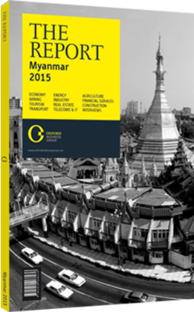U Win Thin, Chairman, Win Consulting, on the launch of a new tax system: Viewpoint

In the democratic transformation process of the Republic of the Union of Myanmar, tax revenues play a vital role in the state budget. The Internal Revenue Department (IRD) under the Ministry of Finance is trying its best to earn optimum revenue from two main sources: a direct tax, in the form of income tax; and an indirect tax, through commercial taxes on the growing national tax base, and from reducing the respective affordable tax rates. Both sources are administered by the same department, so investors and taxpayers should get a proper understanding of these two taxes, as there are some areas foreign investors may need clarified.
For income tax collection, the IRD has devised different means of withholding taxes wherever feasible in order to prevent, or at least mitigate against, the tax evasion that is common in prevailing pay-as-you-earn systems. These withholding taxes are sometimes misunderstood as different types of taxes, rather than the advance tax collected at source for which full credit will be given at the time of final payment or assessment of the tax payer. Usually in practice, firms incorporated outside Myanmar, technically termed “nonresident foreigners”, could not make use of this tax credit, due to being situated outside the jurisdiction of Myanmar and the insignificance of the amounts to be taxed. As such, withholding taxes from non-resident foreigners are now treated as a final payment, so they can be recognised as state budget revenue. However, in practice, if a non-resident foreigner has a permanent establishment registered as a branch office in Myanmar, the withholding tax will be treated as advance tax.
The computation of total income of the individual resident foreigner is dependent on the period of the individual’s stay in Myanmar in the relevant fiscal year. Total income in the case of an individual resident foreigner according to the definition given in the Income Tax Law includes income received within and without Myanmar, that is to say, worldwide income. However, some resident foreigners were misled to believe that this definition is applicable only to companies and not to individuals. In practice, tax will be computed on personal income from outside Myanmar, like income from investments or property before entering the country.
Commercial tax in Myanmar is very peculiar, in that it combines the features of an excise tax (ET) and a value-added tax (VAT). The incidence of indirect tax in the case of ET, which is imbued with a vision to regulate consumption while earning revenue, indirectly affects the taxpayer’s ability to add to the cost of goods sold depending on demand, whereas in the case of VAT it directly affects the end-consumer.
When the Commercial Tax Law was first introduced in 1990, it had an ET nature with VAT features for trading business. Later, some tax authorities placed an emphasis on professing that commercial taxes are only borne by the consumers. This led local businessmen and foreign investors to believe that the commercial tax was a VAT or goods and services tax (GST). IRD, wishing to replace the commercial tax in the near future with a VAT or GST, has now adopted a uniform rate of 5%, exercising at the same time its ET feature by exempting 26 essential items and disincentivising some services by levying different levels of higher tax rates on 16 special goods. In order for investors and the general public to have a better understanding of the system, the items with higher rates should be regarded as falling into a different category and being subject to a special commodity tax, as imposed in other countries.
On the journey toward establishing a self assessment system (SAS), the IRD has called for the use of electronic devices for filing returns and tax payments over the past five years. With the assistance of experts from the IMF, the IRD was able to open a Large Taxpayers Office on January 4, 2014. The office is responsible for disseminating tax education services to the business community and awarding certificates to the largest taxpayers. International organisations, such as the IMF and the US Treasury, are providing the necessary assistance in the area of tax reform. We anticipate Myanmar will be able to launch the SAS and VAT/GST soon.
You have reached the limit of premium articles you can view for free.
Choose from the options below to purchase print or digital editions of our Reports. You can also purchase a website subscription giving you unlimited access to all of our Reports online for 12 months.
If you have already purchased this Report or have a website subscription, please login to continue.

